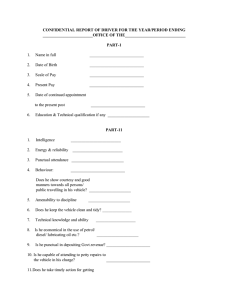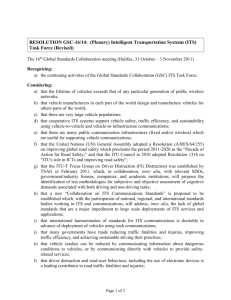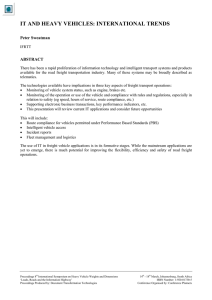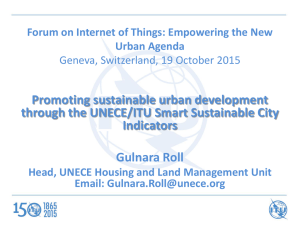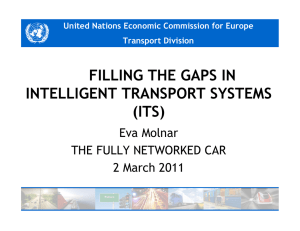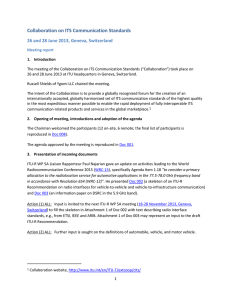Document 12895705
advertisement
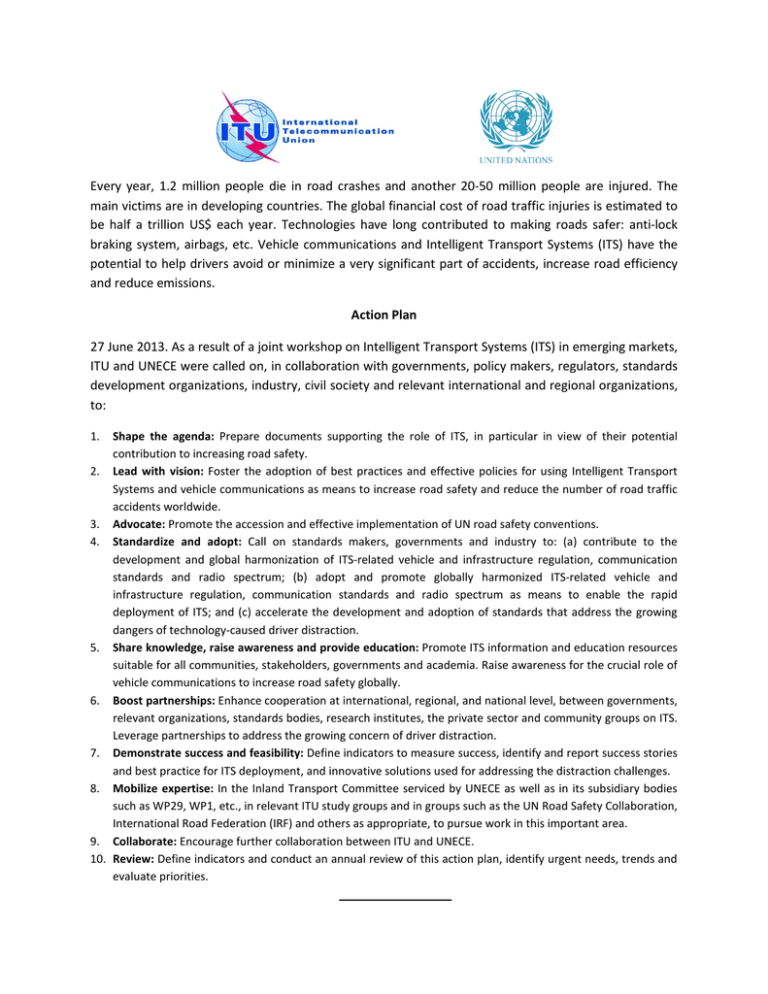
Every year, 1.2 million people die in road crashes and another 20-50 million people are injured. The main victims are in developing countries. The global financial cost of road traffic injuries is estimated to be half a trillion US$ each year. Technologies have long contributed to making roads safer: anti-lock braking system, airbags, etc. Vehicle communications and Intelligent Transport Systems (ITS) have the potential to help drivers avoid or minimize a very significant part of accidents, increase road efficiency and reduce emissions. Action Plan 27 June 2013. As a result of a joint workshop on Intelligent Transport Systems (ITS) in emerging markets, ITU and UNECE were called on, in collaboration with governments, policy makers, regulators, standards development organizations, industry, civil society and relevant international and regional organizations, to: Shape the agenda: Prepare documents supporting the role of ITS, in particular in view of their potential contribution to increasing road safety. 2. Lead with vision: Foster the adoption of best practices and effective policies for using Intelligent Transport Systems and vehicle communications as means to increase road safety and reduce the number of road traffic accidents worldwide. 3. Advocate: Promote the accession and effective implementation of UN road safety conventions. 4. Standardize and adopt: Call on standards makers, governments and industry to: (a) contribute to the development and global harmonization of ITS-related vehicle and infrastructure regulation, communication standards and radio spectrum; (b) adopt and promote globally harmonized ITS-related vehicle and infrastructure regulation, communication standards and radio spectrum as means to enable the rapid deployment of ITS; and (c) accelerate the development and adoption of standards that address the growing dangers of technology-caused driver distraction. 5. Share knowledge, raise awareness and provide education: Promote ITS information and education resources suitable for all communities, stakeholders, governments and academia. Raise awareness for the crucial role of vehicle communications to increase road safety globally. 6. Boost partnerships: Enhance cooperation at international, regional, and national level, between governments, relevant organizations, standards bodies, research institutes, the private sector and community groups on ITS. Leverage partnerships to address the growing concern of driver distraction. 7. Demonstrate success and feasibility: Define indicators to measure success, identify and report success stories and best practice for ITS deployment, and innovative solutions used for addressing the distraction challenges. 8. Mobilize expertise: In the Inland Transport Committee serviced by UNECE as well as in its subsidiary bodies such as WP29, WP1, etc., in relevant ITU study groups and in groups such as the UN Road Safety Collaboration, International Road Federation (IRF) and others as appropriate, to pursue work in this important area. 9. Collaborate: Encourage further collaboration between ITU and UNECE. 10. Review: Define indicators and conduct an annual review of this action plan, identify urgent needs, trends and evaluate priorities. 1.
